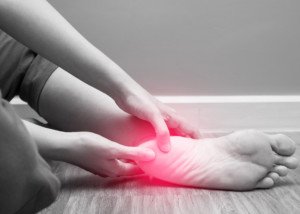“Plantar fasciitis is also commonly called ‘heel spur.’ but the two conditions are not the same,” says Bob Thompson, certified pedorthist, executive director of the Institute for Preventive Foot Health.
A pedorthist is a medical professional who specializes in designing footwear and devices to alleviate foot pain.
“A true heel spur typically does not produce a high level of pain unless it presses on the soft tissue in the heel,” says Thompson.
“While plantar fasciitis and heel spurs can occur together, plantar fasciitis is usually the condition that produces the pain.”
The pain of plantar fasciitis can often be described as burning, or as “my feet are on fire.”
I’ve had plantar fasccitis, and it’s not the same kind of pain you might feel as part of a sprained ankle (which I’ve also had) or from getting hit in the ankle from something falling on it like a gym weight plate.
What’s a heel spur?
“Heel spurs are calcifications forming on the bone, that are typically caused by unusual or abnormal motion in the joints over time, excessive tension on the bone from a tendon, severe or repetitive trauma (everyday wear and tear), the aging process, conditions such as osteomyelitis (bone infection) and Charcot foot, and general inflammation (as in plantar fasciitis).”


 Robert Thompson is a nationally recognized speaker on the topics of preventive foot health and soft tissue injury prevention.
Robert Thompson is a nationally recognized speaker on the topics of preventive foot health and soft tissue injury prevention.
























